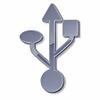Quickly format large disks with a single click of the mouse with this free software
Quickly format large disks with a single click of the mouse with this free software
Vote: (5 votes)
Program license: Free
Developer: Ridgecrop
Version: 1.07
Works under: Windows
Vote:
Program license
(5 votes)
Free
Developer
Version
Ridgecrop
1.07
Works under:
Windows
Pros
- Facilitates efficient space management on larger drives
- Supports memory cards and large hard drives up to 32GB
- Simple and intuitive user interface
- No need for complex installations; portable app functionality
- High compatibility with various Windows and Mac OS versions
Cons
- Maximum individual file size limit of 4GB minus 2 bytes
- Might be less relevant for users who prefer newer or alternative file systems
Streamline Your Storage with FAT32format
Designed to maximize the efficiency of storage space utilization, FAT32format emerges as a valuable utility for users needing to format large hard drives and memory cards. This software is tailored specifically to address the limitations associated with the FAT32 file system and is versatile enough to be compatible with various Windows operating environments.
The FAT32 file system has had a long history, dating back to its introduction with Windows 95 OSR2. It continues to be relevant in modern contexts, particularly for memory cards between 4GB and 32GB, which are commonplace in various electronic devices.
Understanding the File Allocation Table
The functionality of FAT32format is rooted in the File Allocation Table (FAT) system that supports drives exceeding 2GB. One of the file system's hallmark benefits is the use of smaller clusters compared to FAT16, thereby allowing for a more efficient space allocation on the drive. Crucially, FAT32 can handle drives with 65,000 or more clusters.
Files up to the size of 4GB minus 2 bytes can be stored on these drives, and within the FAT32 system, 4 bytes per cluster in the allocation table are standard. It should be noted, however, that the upper 4 bits of the 32-bit values in the table are reserved for system use, not for cluster numbering.
FAT32 Features and Compatibility
Digging into the technical specifics, the BIOS Parameter Block (BPB) in FAT32 is larger than the average BPB, resulting in a boot record that spans beyond a single sector. Reserved areas on FAT32 drives include vital values such as the count of non-allocated clusters and the identification of the most recently allocated cluster. These are part of the BIG FAT BOOT FSINFO structure and allow the system to bypass reading the entire FAT table.
The software's compatibility is extensive, running on legacy systems like Windows XP and 7, as well as more contemporary operating systems including Windows 8.1 and 10. This backward compatibility ensures that FAT32format remains useful across a wide user base. It's also applicable for memory devices like SD, SDHC, and micro SDHC cards. For Mac enthusiasts, the utility runs seamlessly on versions starting from Mac OS 8 and 9x.
Interface and Usability
FAT32format boasts a straightforward and user-friendly interface. This allows users to execute the program as an independent, standalone application. Updates to FAT32format are easily managed via the version info tab, making the maintenance of the utility uncomplicated for the end-user.
An additional convenience is the software's portability. It can be run from a basic thumb drive on any compatible PC, eliminating the need to alter the system registry. This is a significant advantage for those who require a reliable formatting tool that does not necessitate extensive system changes or installations.
Overall, FAT32format offers an accessible, efficient solution for managing and formatting storage devices according to the FAT32 file structure. Its ease of use combined with its robust compatibility makes it a strong contender for those in need of this specific functionality.
Pros
- Facilitates efficient space management on larger drives
- Supports memory cards and large hard drives up to 32GB
- Simple and intuitive user interface
- No need for complex installations; portable app functionality
- High compatibility with various Windows and Mac OS versions
Cons
- Maximum individual file size limit of 4GB minus 2 bytes
- Might be less relevant for users who prefer newer or alternative file systems




